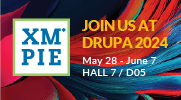Almost 22 years ago I made the move from my entry level Assistant Account Executive position at Katz Radio to become the Traffic/Production/New Business Coordinator for the Creative Services department of Katz Media Group in NYC. From there, we provided all the marketing and sales material for the company. Problem was, I was pretty clueless on how it all worked but luckily I had a cousin who was then working at J. Walter Thompson. After helping me prep for the interview, she handed me a book and said “This is the Bible.” That book was the “Pocket Pal,” and needless to say in what can only be described as a full circle moment, here I am interviewing the editor of the book that helped me launch my career and stayed by my side through most of it.
Mr. Romano is truly a Print Industry Legend, and I am most honored that he agreed to answer a few questions for us. This is merely a snippet of his vast knowledge and insight, so please do a little search and take it all in, especially if you are just starting out, or interested in all the Printing Industry has to offer.
 DC: For anyone who might not know, who is Frank Romano and what does he do?
DC: For anyone who might not know, who is Frank Romano and what does he do?
FR: Frank Romano’s career has spanned over 50 years in the printing and publishing industries. Many know him as the editor of the International Paper “Pocket Pal,” or have read one of the thousands of articles he has written. He is the author of 49 books, including the 10,000-term Encyclopedia of Graphic Communications (with Richard Romano), the standard reference in the field. He lectures extensively and has been quoted in many newspapers and publications, as well as on TV and radio. He recently appeared on the History Detectives PBS program.
DC: When did you develop an interest in print and what about it has kept you engaged throughout the years?
FR: It was an accident. Just before my high school graduation I went to my guidance counselor who had two job recommendations. One was at Squibb and the other was at the Mergenthaler Linotype Company. What does the Mergenthaler company do, I asked. Something to do with books, he said. The rest is history.
DC: What is your opinion on the significance of print in a multi-channel world?
FR: Print was once the only medium; now it is part of a new order where the World Wide Web meets the Wide Web Press. Print and paper will transcend the digital age, because print gets attention. Print is not a momentary image on a screen; you feel print in your hand even fleetingly and that is its power: it moves you without moving. Marketers think they are saving money with electronic communication, but paper gets results.
DC: You are speaking about “The New Wave of Digital Printing Technologies” at Margie Dana’s Print & Media Conference at Graph Expo. Can you tell us about one of them?
FR: Picture a high-speed printing press printing full color a roll of paper 42 inches wide. Picture it using inkjet. Picture a printer printing a high-quality sign 16 feet wide. Picture it using inkjet. Picture a printer printing electronic circuitry and batteries. Picture it using inkjet. Get the picture?
DC: PMC hosted a webinar for Adobe on PDF/VT technology earlier this year. Will this be a game changer and if so who should be gearing up?
FR: PDF/VT and the Adobe Print Engine may finally bring personalized printing to print service providers. Until now it has been harder to do than it has to be.
DC: Lastly, since you are the Professor Emeritus, School of Print Media at the Rochester Institute of Technology (RIT), what message would you offer at commencement regarding the future of print?
FR: Graduates of the class of 2011
The term “graphic communication” is now used and it covers all forms of visual media, especially print. Graphic communication is a profession that will bring you in contact with lots of interesting people–photographers, authors, editors, illustrators, marketers, and other creative individuals who produce what will become books, magazines, ads, websites, and more.
You will deal with giant corporations and small businesses. Everyone needs to communicate in order to do business or sell or inform or entertain. Your days will never be dull.
You will have to master a host of technologies and deal with information in many different forms. You will work with other talented people to take ideas and put them in some format–whether on paper, or pixels on a screen, or, in most cases, both. You will become a media specialist.
The field of graphic communication is complex and the processes are intricate and technical. Keep in mind that if your job is too easy it will probably become a program or a robot, but if it requires solving problems, companies will reward you well to do it.
You will work with computers and networks and imaging systems of all kinds. You will have to constantly upgrade your technical and business skills. You will never stop learning, and that is a part of the joy of being in this industry.
Graphic communication is a wonderful career and you will be challenged and rewarded. There is no feeling greater than when you hold a book or some other printed product in your hands and think “I did that.” Even after a lifetime, you will still have that feeling of accomplishment with a hint of awe.
There are some who say that print is old media, but it is as new as the day it was invented and every day that it is re-invented. A hundred years from now the printed product will still be new to someone, but electronic media will have long disappeared into cyberspace. Print is for now and forever.
Stay interested in graphic communication, today and throughout your life–because helping others to communicate is a noble profession. Good luck.
Related articles
- Printer Accessories As Relevant Printing Components (pctechmojo.com)
- “Choose Print” as Part of Your Marketing Mix (prnewswire.com)












